When I mention my November 2018 trip to the island of Providenciales, I usually get one of two reactions from people. Where is that? Known locally as Provo, it is the population center of an archipelago in the Caribbean known as the Turks and Caicos Islands (TCI). A British Overseas Territory that has been distinct from the Bahamas since 1973, Provo is located almost due north of Hispaniola and due east of Cuba. There are many resorts on the island and as a result Provo has grown into a tourist hotspot.
The other reaction I get is how did you decide to go there? It may have had something to do with the warm weather, the nice sandy beaches, the water which stays at a bath-like 80 degrees down as far as 30 feet. I could go on and on. In reality, I had been scheduled for a work trip in June to Washington and afterwards I wanted to go on a vacation to the Caribbean. I had been there before, but never on one island for very long. TCI was the only destination, other than Nassau, that you could get to within a few hours from Washington.
The trip to Washington still happened, but I decided to delay the TCI trip until November. I actually ended up going there right after my trip to Norway, so I got the full experience of climates in one trip – subarctic to the tropics in a matter of days.
The Turks and Caicos Islands is made up of two different types of islands – Turks and Caicos. I know, shocking. The Turks are divided from the Caicos by the Turks Islands Passage and consist, among others, of Salt Cay and Grand Turk which is home to the Capital, Cockburn Town. The Caicos islands are larger and consist of (from west to east) West Caicos, Provo, North Caicos, Middle Caicos, East Caicos and South Caicos. There are also many smaller cays in the archipelago.
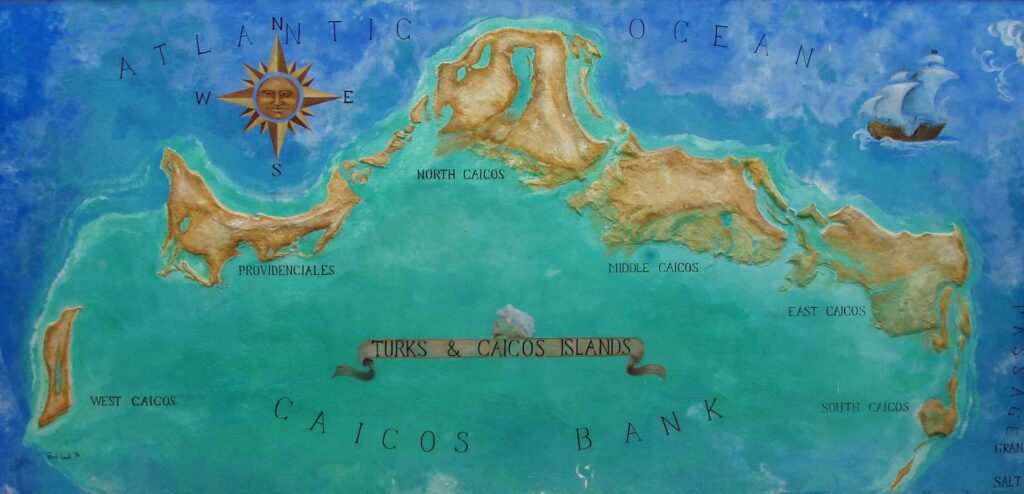
So what does any of this have to do with bridges? Well, the TCI are, as their name would imply, islands. Little chunks of land barely jutting out of the sea, some just barely out of sight of each other. This was reinforced by my arrival by plane. As the plane comes in to land, from my vantage point it looks like the pilot is mad – we’re going to land in the ocean! And just before we touch down, out of nowhere, an island materializes. It seems inevitable, therefore, that when you arrive on one island and you see all that that island has to offer, you would naturally want to go on to the next island. But how do you get to that next island?
While exploring Provo, I discovered that there is regular passenger only ferry service from the northeast tip of Provo to North Caicos. Apparently you can rent a car on North Caicos, you just can’t take your rental car from Provo and drive it on North Caicos. Anyway, you can drive across North Caicos and take the one mile long Bottle Creek Lagoon causeway over to Middle Caicos.
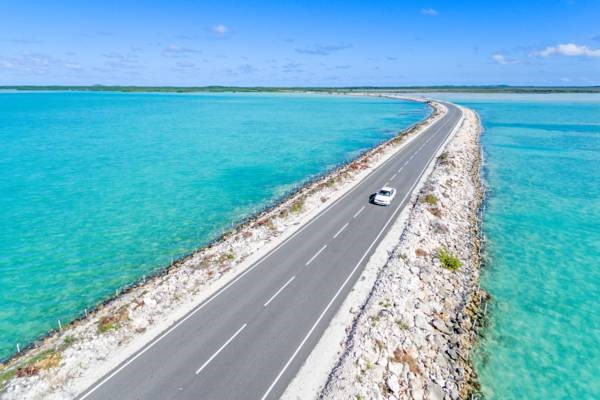
The causeway was originally built in 2007, with many wondering what took so long – after all the water is quite shallow. Prior to its construction, passage between North and Middle Caicos was by small boat. Originally a two lane road paved with HMA, complete with concrete traffic barriers, the causeway was damaged as Hurricane Hanna passed over the islands in 2008. The HMA was ripped off and the barrier demolished by the Category 2 storm. In 2014, the causeway was rebuilt.
Once you make the crossing you can drive and drive and drive, until you reach the end of Middle Caicos. Connection to the remaining islands is by small boat only, which leaves much of the rest of the islands sparsely inhabited.
I was busy getting my SCUBA certification so I didn’t have time to jaunt over on the ferry. Still, the thought of what the impact to growth in this beautiful place would be if the other islands had easier access was intriguing to me. What would life be like in the TCI with a continuous highway between the islands?

I stayed in a wonderful waterfront single bedroom place on Thompson Cove during my stay and one evening I got to talking with my neighbor. A local businessman on the island, he was staying there while his home was being remodeled. We stayed up that night discussing what it is like to live in paradise, his restaurant background and the future for the TCI. During our musings, he asked me what I do and I replied, I design bridges, and that easily started a conversation that went on for hours.
One development being planned by the government is a dock for cruise ships on Provo. Up to that point, cruise ships only stopped at Grand Turk. My mind swam at the potential for investment and growth. I’ve been on cruise ships, and during a Caribbean cruise the population of one of these island stops can increase by a few thousand for the day. Imagine the money spent in the local shops, restaurants, jetski rentals, SCUBA diving, boat tours, I mean the list goes on and on. The shot in the arm to the local economy could be huge.
But probably the one project that interested me the most was the plan to bridge the Caicos islands. Ever since I left the islands, I keep thinking of the possibilities here. In March of 2018, the TCI Weekly News published an article revealing that the Minister of Infrastructure, Housing and Planning had recently introduced an informational paper on ‘The Turks and Caicos Spine Road Project’ to the Cabinet on Grand Turk. While still in the formative stages, the project would provide inter-island connection between South Caicos and Providenciales.
While the TCI government likely doesn’t have the funding to build such an impressive project, one of the largest ever undertaken in the country’s history, the government’s intention is to budget for it, starting with a $3 million environmental impact assessment. A project of this size will likely need private partnership, a term we’ve heard before as PPP or P3, a public-private partnership.
A P3 could be a good way to go. If you make the highway a tollway, the private entity can recoup part of their investment through collection of tolls, while using a portion for maintenance of the highway. Basically, a government like the TCI would be asking investors to invest in their country. This is growing in popularity in other parts of the world, and with the ever increasing cost of transportation projects, it makes sense. If you build it, they will come. More business, more tourism, more jobs.
But technically, how would you do it? Let’s start by looking at the geography. It has been said that if you were to lower the sea levels around the archipelago by about 50 feet, you would have a land mass larger than Puerto Rico. So, we have relatively shallow water in and around the Caicos. Basically the islands are sitting on a shelf and the water depth in and around the islands is only about 20 feet deep.
That makes causeways very attractive, in which case you would only need a bridge at the ends to allow for marine traffic to pass. For the waterways we are talking about, it is unlikely they would need to have huge vertical clearances, so lower level bridges could be acceptable. A movable bridge could be an option, as is done in Florida.
What about length? While the Provo-North Caicos ferry takes a straight line approach across open water, a bridge or causeway could use the series of cays between the two islands as stepping stones. Something similar could be done between East Caicos and South Caicos. While some of these crossings would be large, they wouldn’t be without precedent. The Florida Keys highway uses long viaduct like structures to connect the islands all the way out to Key West.
What about a floating bridge? That could also be an option. Causeways can have a negative environmental impact on the sea floor, as can long bridges with many piers. Floating bridges can have fewer impacts, depending on the design. However, the real benefit to a floating bridge is where you have extremely deep water or unsuitable material for foundations. If a causeway will work well, it is likely that the soils here can support the loads. And as we have already established, the waters here are pretty shallow. But at this early stage, everything should be on the table.
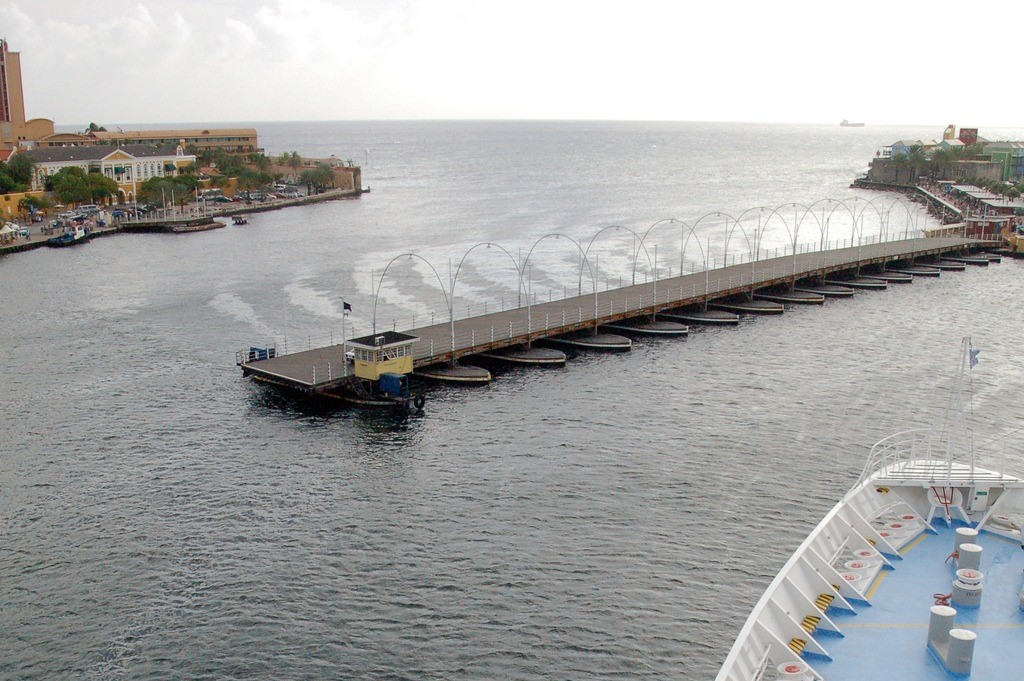
Floating bridges are not unheard of in this part of the world. The Caribbean is home to the Queen Emma Bridge, the ‘Swinging Old Lady’, connecting two quarters of Willemstad in Curacao. Spanning nearly 550 feet across the 1,000 feet deep St. Anna bay, a floating bridge makes more sense here.
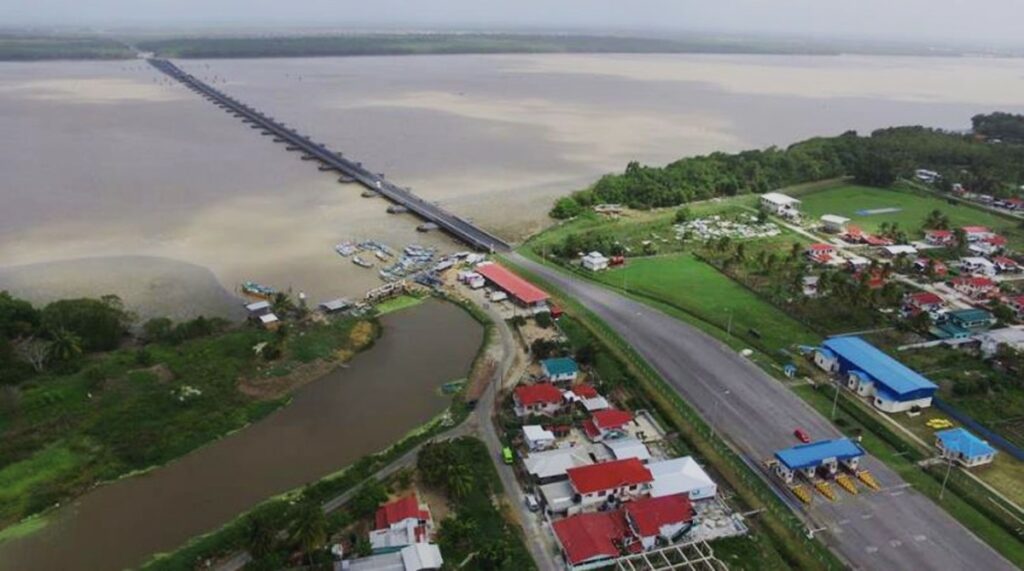
There are two floating bridges located in Guyana, Berbice River and Demerara Harbour. Both bridges span waterways which are deep enough for large vessels to navigate. Berbice was built in 2008 while Demerara was built in 1978. With an estimated service life of 10 years, Demerara has long exceeded that. Construction is currently underway to replace it.
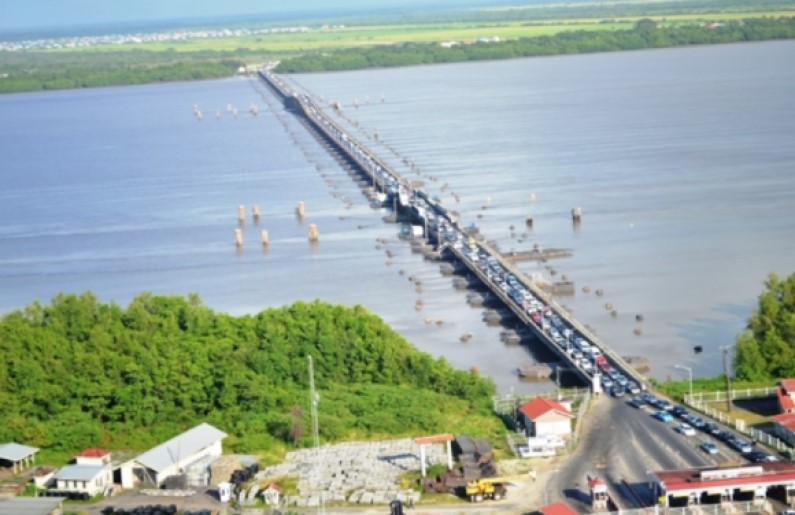
Storm loading on any proposed structure will be a major part of the design process. Hurricanes are not infrequent – those uninvited guests in these parts. But what level of storm? Perhaps a tropical storm is your 1 year storm loading but about a 100 year storm? Floating bridges, especially like the three examples above, are somewhat flexible and can handle some abuse. The more rigid you make any proposed structure – the more load it will be required to resist. And if you want your bridge to resist a Category 5 storm, you’d better dig deep.
Life cycle costs are another consideration to make. Steel or concrete? Concrete seems obvious, but chloride intrusion is real and irreversible. Steel can be repainted. Cathodic protection can be finicky, expensive and of questionable effectiveness, but it is an option. Exotic materials can help, but they are expensive. But even then, deep foundations are hard to maintain. As we all know from experience, once a piece of infrastructure is built, those who use and rely on it often forget what it was like not to have it.
And finally, the cost of construction. Raw materials for building just do not exist in the Caribbean. Anything you would need would need to be imported. Experienced labor will be needed, and some may come locally but much of it will come from outside the TCI. All of these things drive up the cost. A floating bridge’s components could be built in, say, Florida at a fraction of the cost of building in the TCI and brought by barge to the islands for assembly.
The time I spent in the TCI was wonderful. Provo is quiet – my snorkeling excursions in Thompson Cove were peaceful while I toured the reef balls and coral beneath the surface. But it also left me wondering what it would be like to be an engineer working in paradise building a 21st century transportation system to connect these wonderful islands. And the other side of me, who sees life as a series of dollar signs, wonders should I buy that one acre waterfront lot on North Caicos for $99,000? As Robert Plant said at the end of The Crunge, where is that confounded bridge?
Views: 3030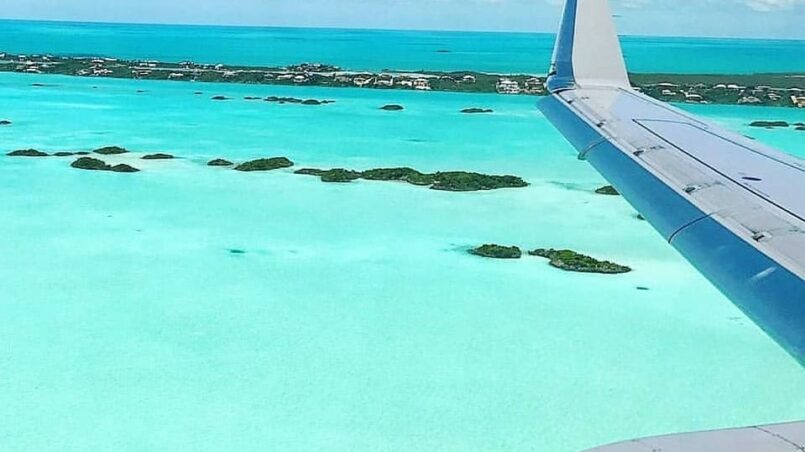

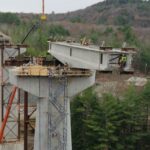





Nice article. Working in paradise would be wonderful.
Hey there, You’ve done a great job. I will definitely digg it and personally recommend to my friends. I’m confident they will be benefited from this site.
Hey there, You’ve done a fantastic job. I?ll certainly digg it and personally recommend to my friends. I am confident they’ll be benefited from this site.
Hello, very good article. I have been to the TCI many times, it is very good suggestions to build bridges between islands.
In near future 2021, I would go to TCI to discuss with the PM for this projector. Properly will need your idea.
Keep in touch.
best regards
Victor